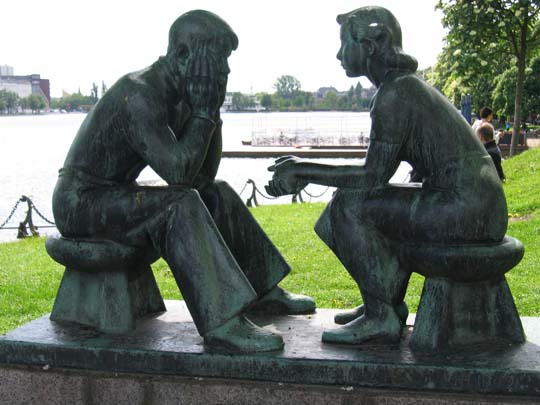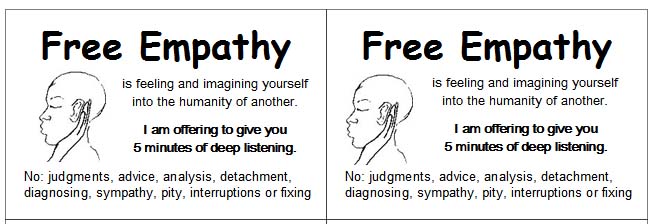The way in which they approached every topic we addressed reminded me of something James Baldwin had said years ago, "People are trapped in history, and history is trapped in them." Baldwin came to this realization when he chronicled his experiences in a remote Swiss village in 1951 in the essay from Notes of a Native Son entitled, "Stranger in the Village." And it was precisely this sensibility that Ken and Valerie possessed as a foundation for the way they constructed their world. In other words, whether they were talking about the effect of the urban planner Robert Moses' ideas on the physical place where we were sitting or the way long dead New York City mayors were obviously influencing the present mayoral race-- there was always the the ability to see the past in the present. This kind of time travel to the intersection of the past and the present is what expert historians do, and it is one of the hardest things to teach novice historians. As a side note (though perhaps not really too much to the side) why are some of the best experience-based "historians" -- Baldwin, Robert Penn Warren, William Faulkner, Toni Morrison -- writers in genres other than traditional history? All of them possess deep and sophisticated understandings of the way the past and present intersect, and it is part of what makes their writing so psychologically compelling.
Baldwin continued his thinking fourteen years later in a much under-appreciated essay entitled, "The White Man's Guilt." As well as being one of the most striking examples of empathy in the way I have been describing it in previous blog posts, Baldwin explains in this essay how the past and the present exist simultaneously, and how that affects who one is and how one acts. Baldwin writes, "History, as nearly no one seems to know, is not merely something to be read. And it does not refer merely, or even principally, to the past. On the contrary, the great force of history comes from the fact that we carry it within us, are unconsciously controlled by it in many ways, and history is literally present in all that we do. It could scarcely be otherwise, since it is to history that we owe our frames of reference, our identities, and our aspirations. And it is with great pain and terror that one begins to realize this. In great pain and terror one begins to assess the history which has placed one where one is, and formed one's point of view."
What Baldwin is reminding us is vital to having students engage in experience-based history early in their academic lives. We have collective public pasts that constitute history and we have private pasts that are expressed through memoir, and the intersection of those two is what we call daily life. It is the daily life we encounter every day, and it is what we are unconsciously controlled by. Students can be brought to see this in a multitude of ways, but many history teachers are reluctant to let students play the game of history the way Ken and Valerie do for fear they will do it poorly.
One of the biggest debates in the teaching of history is less about what constitutes an expert historian and more about when one should introduce complicated ideas like the ones Baldwin is identifying to novice learners. In other words, history is seen as a kind of a club in which you have to pay your dues before you can become a member. To be sure, there is a difference between novices and experts, but when are the novices allowed to try to do the things the experts know how to do on a very high level?
Daniel Willingham, a cognitive psychologist from the University of Virginia, is someone whose work always interests me because he looks at the acts of cognition that a learner employs in creating meaning. He goes beyond more traditional dictums passed out by teachers to just "work harder" and delves into strategies that are based on the cognitive strengths that a person possesses. However, in his recent book, Why Don't Students Like School?, he comes down on the side of not letting novice learners into the game of history that experts play too quickly. He writes, "A more modest and realistic goal for students is knowledge comprehension. A student may not be able to develop his own (historical) theory, but he can develop a deep understanding of existing theory. A student may not be able to write a new narrative of historical fact, but she can follow and understand a narrative that someone else has written." He continues by comparing expert historians to expert tennis players, "In the same way expert tennis players (like expert historians) spend most of their time during a match thinking about strategy and trying to anticipate what their opponent will do. But we shouldn't tell novices to think about strategy; novices need to think about footwork and about the basics of their strokes."
Willingham would have people gain the necessary background knowledge that experts have before allowing them to play the game. This is, in fact, the way many history classes are taught; learn the material through a series of drills so that you may hope to be allowed to play the real game of history later in college.
But the fact of the matter is we need to let novices play the game of history earlier rather than later precisely because of what Baldwin illuminates in the quote above-- "People are trapped in history, and history is trapped in them." In daily life, this principle is one that makes all the difference in how you understand the situation you are in. If you don't practice it, and deeply understand its implications, there are often serious consequences.

Most recently, Barack Obama sounded much like an expert historian (and memoirist) when he was trying to explain the aftermath of the court decision in Sanford, Florida.
There
are very few African American men in this country who haven't had the
experience of being followed when they were shopping in a department
store. That includes me. There are very few African American men
who haven't had the experience of walking across the street and hearing the
locks click on the doors of cars. That happened to me -- at least before I
was a senator. There are very few African Americans who haven't had the
experience of getting on an elevator and a woman clutching her purse nervously
and holding her breath until she had a chance to get off. That happens
often.
And
I don't want to exaggerate this, but those sets of experiences inform how the
African American community interprets what happened one night in Florida.
And it’s inescapable for people to bring those experiences to bear. The
African American community is also knowledgeable that there is a history of
racial disparities in the application of our criminal laws -- everything from
the death penalty to enforcement of our drug laws. And that ends up
having an impact in terms of how people interpret the case."
One of the things that was not surprising to me, given what I have heard from President Obama in other settings, was something that did seem to surprise news commentators. They noted how "remarkably personal" his talk was. It almost seemed to these commentators as if the historical was objective and the personal was subjective. But as I wrote about in the last blog post, from an experience-based point of view-- history is public memoir, and memoir is public history. Our public and our private lives are both influenced by history because history is most fundamentally the stories we tell ourselves about the past. The two are intertwined in our daily lives and we make decisions all the time based on Baldwin's principle--"People are trapped in history; and history is trapped in them." And that is why experience-based history is so important to both novices and experts.
We really have no choice about whether to be historians, only whether we are conscious that we are "doing history" whenever we act. And whether we will be historians trying to be as expert as we can be.
One of the things that was not surprising to me, given what I have heard from President Obama in other settings, was something that did seem to surprise news commentators. They noted how "remarkably personal" his talk was. It almost seemed to these commentators as if the historical was objective and the personal was subjective. But as I wrote about in the last blog post, from an experience-based point of view-- history is public memoir, and memoir is public history. Our public and our private lives are both influenced by history because history is most fundamentally the stories we tell ourselves about the past. The two are intertwined in our daily lives and we make decisions all the time based on Baldwin's principle--"People are trapped in history; and history is trapped in them." And that is why experience-based history is so important to both novices and experts.
We really have no choice about whether to be historians, only whether we are conscious that we are "doing history" whenever we act. And whether we will be historians trying to be as expert as we can be.









